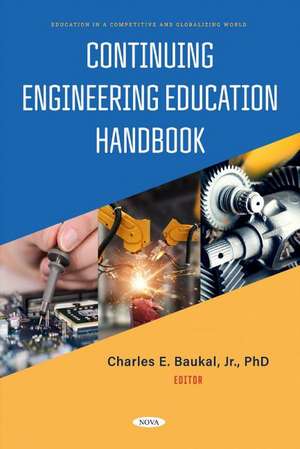Continuing Engineering Education Handbook
Editat de Charles E. Baukal, Jr.en Limba Engleză Hardback – 2 iun 2022
Preț: 1213.38 lei
Preț vechi: 1553.60 lei
-22% Nou
Puncte Express: 1820
Preț estimativ în valută:
232.25€ • 244.00$ • 195.19£
232.25€ • 244.00$ • 195.19£
Carte disponibilă
Livrare economică 18 februarie-04 martie
Preluare comenzi: 021 569.72.76
Specificații
ISBN-13: 9781685077938
ISBN-10: 1685077935
Pagini: 365
Dimensiuni: 178 x 254 mm
Editura: Nova Science Publishers Inc
Colecția Nova Science Publishers Inc
ISBN-10: 1685077935
Pagini: 365
Dimensiuni: 178 x 254 mm
Editura: Nova Science Publishers Inc
Colecția Nova Science Publishers Inc
Cuprins
Preface; Continuing Engineering Education; Fifty Years in Engineering Distance Education: Past Trends and Future Directions; Working Engineers Learning Preferences; Incorporating Learning Styles into Continuing Engineering Education: A Process Heater Case Study; Selecting Multimedia for Continuing Engineering Education; Effective Instructional Practices in Continuing Engineering Education; Virtual and Augmented Realities Continuing Engineering Education; Continuing Engineering Education Practices and Preferences; Live-Streamed Curricula in a Virtual-Demand World; Continuing Engineering Education in the Process Industries; Sourcing Continuing Engineering Education; Building a Sustainable Administrative Organization for Delivering Professional Programs to Working Adult Learners; A Sustainable Future Through the 60-Year Curriculum; Sustainability Education and Research in Action (SERINA): An IACEE Perspective for Sustainable Career Pathways in Engineering; Future Research Areas; Index.
